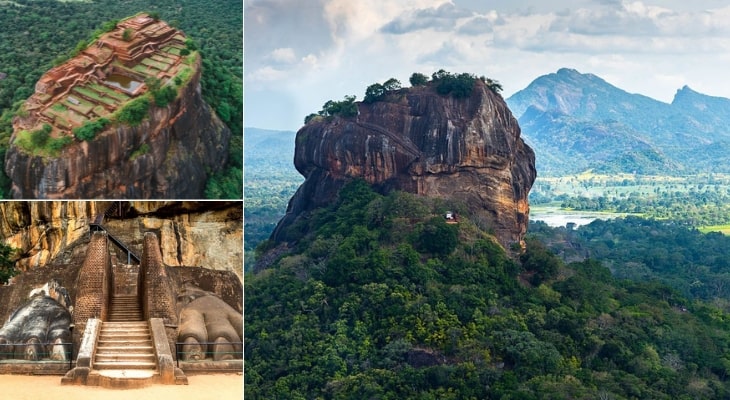Rising 2,524 meters (8,281 feet) above sea level, Pidurutalagala – also known as Mount Pedro – claims the title of Sri Lanka’s highest peak. Nestled in the heart of the Central Highlands near Nuwara Eliya, this majestic mountain is more than just a geographical landmark; it’s a haven of biodiversity, a vital watershed, and a vantage point for some of the island’s most breathtaking views. While less accessible for trekkers than its famous neighbour, Adam’s Peak, Pidurutalagala offers a unique blend of natural beauty, ecological significance, and panoramic splendour. Let’s uncover the wonders of this magnificent giant and its role in Sri Lanka’s landscape.
A sanctuary of biodiversity
Biodiversity of Pidurutalagala and its surrounding forest reserve are extraordinary. Pidurutalagala peak is characterized by montane grasslands (patana) and cloud forests that thrive in the cool, misty high-altitude environment. Part of the Central Highlands, a UNESCO World Heritage Site, its cloud forest teems with endemic species. The upper slopes and summit are blanketed in lush greenery, with cloud forests featuring gnarled trees draped in moss and lichens that create a mystical canopy, while wildflowers like Heena, Nelu, and Maha Rathmal attract birds such as the Sri Lankan whistling thrush, alongside parrots and butterflies and adding splashes of colour to the rugged terrain, creating a botanical paradise that feels worlds away from the tropical lowlands.
The fauna here is equally remarkable, hosting a range of endemic species that make Pidurutalagala a priority for conservation. The elusive Sri Lankan leopard prowls these forests, a rare and majestic predator, while the elusive Horton Plains slender loris hides in the shadows. The forest also supports sambar deer and the purple-faced langur swings through the canopy with its distinctive calls echoing in the mist. Birdwatchers flock to the area to spot endemic species like the Sri Lankan whistling thrush, the Sri Lankan bush-warbler, and the vibrant Sri Lankan blue magpie, whose iridescent feathers shimmer in the sunlight. These rare species, found nowhere else on Earth, underscore the mountain’s ecological importance and the urgent need to protect its fragile ecosystems.
A lifeline for the region: Pidurutalagala as a watershed
Beyond its biodiversity, Pidurutalagala plays a critical role as a watershed for Sri Lanka’s Central Highlands. The mountain’s steep slopes give rise to numerous waterways that cascade down, providing a year-round water supply to the communities living along the eastern escarpment. These streams and rivers are lifelines for agriculture, irrigating tea plantations and rice paddies, supplying drinking water, and sustaining the ecological health of the surrounding areas. In a country where water management is vital, Pidurutalagala stands as a natural guardian, ensuring the flow of life to the lands below.
Panoramic views and visible landmarks
The summit of Pidurutalagala offers a 360-degree panorama that ranks among the most spectacular in Sri Lanka. On clear days, the views stretch across the Central Highlands, revealing a canvas of peaks, valleys, and distant horizons. Adam’s Peak (Sri Pada), with its iconic conical shape, stands out prominently – a sacred site we’ve explored in previous articles, known for its visibility across the island.
To the south, on exceptionally clear days, the shimmering expanse of the Indian Ocean comes into view, a testament to the mountain’s commanding height. Other notable landmarks include the rolling ranges of Horton Plains National Park and the Uva Basin and Namunukula mountain range, painting a picture of Sri Lanka’s diverse topography. At night, some visitors report glimpsing the faint lights of Colombo Port, a distant glow that connects the highlands to the bustling capital.
Unique features of Pidurutalagala
Unlike many highland peaks with jagged summits, Pidurutalagala’s top is distinctively flattened, covered in a carpet of green patana grass that gives it an almost otherworldly appearance. This unique summit, surrounded by cloud forests, feels like a hidden meadow in the sky, offering a serene contrast to the rugged ascent. However, the summit isn’t open for casual exploration – it’s designated as a high-security zone due to the presence of key national broadcasting and military communication installations. Visitors must pass through security checkpoints to access the area, a reminder of the mountain’s strategic importance.
While trekking to the summit isn’t permitted, Pidurutalagala is accessible by vehicle, making it a scenic drive for those eager to experience its wonders. The road winds through Nuwara Eliya, climbing steadily as the vegetation shifts from tea estates to montane forests. Along the way, misty vistas and glimpses of wildlife – like a fleeting purple-faced langur – add to the journey’s allure, culminating in the breathtaking views from the top.
Why visit Pidurutalagala?
Pidurutalagala may not have the pilgrimage allure of Adam’s Peak, but it offers a different kind of magic – one rooted in nature’s quiet splendour and ecological significance. Its biodiversity, from rare leopards to vibrant wildflowers, tells a story of survival and adaptation in Sri Lanka’s highlands. Its role as a watershed underscores the interconnectedness of nature and community, while its panoramic views remind us of the island’s vast beauty. Though the summit requires security clearance, the drive up is a journey worth taking, offering a glimpse into a world where nature reigns supreme.
Pidurutalagala’s biodiversity is a testament to Sri Lanka’s ecological richness and hydrological importance, a fragile treasure thriving despite human encroachment. Standing at the summit, the chilly air and fleeting mist felt like a whisper from nature – a call to protect this sacred haven. The drive is a journey through time, revealing the untamed beauty of Sri Lanka’s highest peak offering breathtaking vistas.
As you stand on Pidurutalagala’s grassy summit, gazing toward Adam’s Peak or the distant Indian Ocean, take a moment to appreciate the mountain’s silent contributions – its waters sustaining life, its forests sheltering the rare and the wild. Pidurutalagala is a testament to Sri Lanka’s natural heritage, a peak that whispers stories of resilience and harmony.
Have you visited Pidurutalagala or spotted its endemic wildlife? Share your experiences below!

Leave a Reply